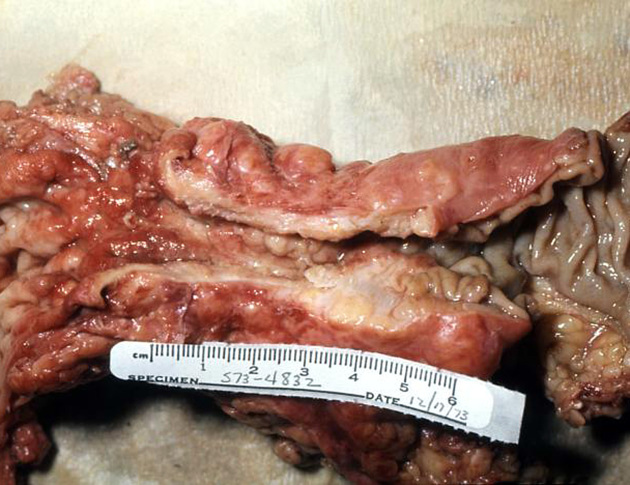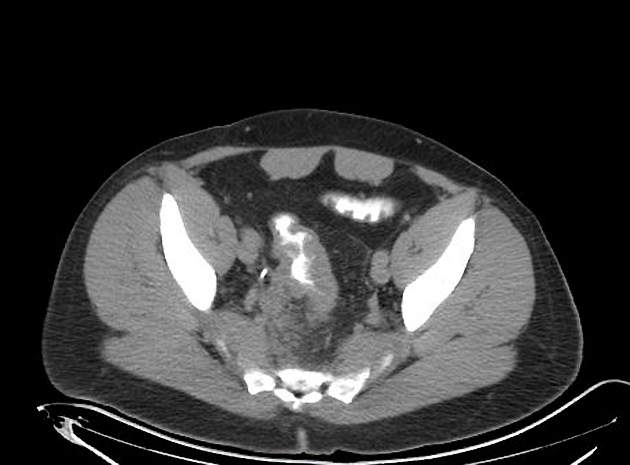This is a basic article for medical students and other non-radiologists
Colorectal cancer, also called colorectal carcinoma (CRC), is the most common cancer of the gastrointestinal tract and the second most frequently diagnosed malignancy in adults. CT and MRI are the modalities most frequently used for staging. Surgical resection may be curative although five-year survival rate is 40-50%.
On this page:
Reference article
This is a summary article; read more in our article on colorectal carcinoma.
Summary
-
epidemiology
- common cancer: accounts for 15% of newly diagnosed cancers
- disease of the elderly: median age 60-80 years
- rectal cancers present slightly earlier with a slight male predilection
-
presentation
- insidious onset with altered bowel habit
- chronic occult blood loss (iron deficiency anemia)
- can present with bowel obstruction, metastases or intussusception
-
pathophysiology
- 98% are adenocarcinomas
- they may arise from pre-existing adenomas
- occur from the cecum to rectum
- rectosigmoid: 55%
- cecum/ascending: 20%
- transverse: 10%
- descending: 5%
- staging using the Duke staging system (A-D)
- risk-factor: familial adenomatous polyposis (FAP)
-
investigation
- CT for diagnosis and staging
- MRI for local staging in rectal carcinoma
- CT colonoscopy for screening
- barium studies no longer used in most centers
-
treatment
- local surgical control
- adjuvant chemotherapy reserved for Dukes C disease
-
prognosis
- overall 5-year-survival is 40-50%
- the stage at operation is the key factor affecting survival
- A: 80-90%
- B: 70%
- C: 33%
- D: 5%
Role of imaging
- initial diagnosis
- virtual colonoscopy
- abdominal CT in the acute patient
- local staging in rectal carcinoma by MRI
- staging by CT CAP (chest, abdomen and pelvis)
Radiographic features
CT
- soft-tissue-density masses arising from the bowel wall
- challenging to see small tumors on CT
- low sensitivity for bowel cancer (45-77%)
- bowel wall thickening with luminal narrowing
- proximal luminal dilatation
- ulceration in larger mass
- complications, e.g. fistula, obstruction, intussusception, perforation












 Unable to process the form. Check for errors and try again.
Unable to process the form. Check for errors and try again.